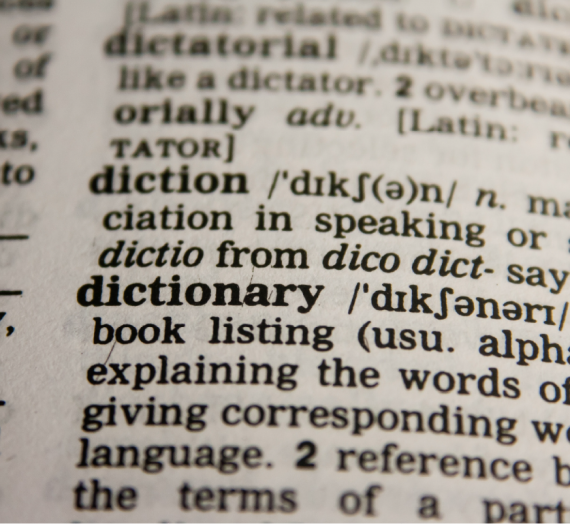As editors, we do not want to let communication errors get between us and our writers. But good communication can be difficult when editing terminology is so imprecise.
We editors pride ourselves on our communication skills. We are constantly emailing, Zooming, writing, and commenting—all to help our writers communicate the message in the way that they want. But even editors sometimes run into communication problems. There is nothing worse than spending hours on an edit only to realize that it was not at all what the author expected you to do. Have you ever run into a problem like this and wondered where it stemmed from? The issue might come down to terminology.
THE RESEARCH
Mark J. H. Fretz (2017) focuses on copyediting terminology in his article “Speaking of Editing: The Nomenclature of Copy-Editing.” He points out that “copy-editing is of particular interest because it seems to mean many different things to people within the publishing industry” (244). Fretz began his research by sending a survey to 64 editorial professionals to determine how they understood certain copyediting terms. Fretz’s goal with this survey was to understand whether or not editorial professionals used the terminology consistent with the way the terms are described in editing handbooks and style guides.
“Copy-editing is of particular interest because it seems to mean many different things to people within the publishing industry.”
Mark J. H. Fretz
Fretz found that editorial professionals recognized the terms light, medium, and heavy copyedit, but they had different definitions for each, depending on a variety of factors:
1) grammar, syntax, and style
2) level of intervention
3) quality and consistency of writing
4) time
5) budget
Answers often contradicted each other. For example, checking a bibliography was an issue of style, and thus it might be considered a light copyedit, but it was also reported as one of the tasks that took the most time, so it could be considered a medium or heavy copyedit as well. In addition, time taken to do a light, medium, or heavy copyedit was given in wide ranges. Time doing a light copyedit went anywhere from 7 to 10 pages per hour. Medium edits typically went from 5 to 8 pages per hour, and heavy from 0 to 4.
THE IMPLICATIONS
Communication is so important, but we cannot improve it just by identifying the problem. Based on Fretz’s findings, we as editors can take away two main points of action going forward.
First, as professionals in the publishing industry (e.g., editors, publishers, writers), we should all try our best to standardize the terms we use across job descriptions and departmental boundaries. We can put the standardized terms into practice by making sure that our light copyedit really is light and by following or establishing standardized pricing and time expectations.
Second, as editors we should make sure that no matter the terms we use, we define them clearly for whomever we are working with. We can be honest about the time and money that an edit is going to take.
Doing these two things will help prevent a large number of issues in the future. At the very least, we can rest easy knowing that we edited what we said we would, and hopefully our lingo will become more standardized along the way.
To learn more about the terminology used in editing, read the full article:
Fretz, Mark J. H. 2017. “Speaking of Editing: The Nomenclature of Copy-Editing.” Journal of Scholarly Publication 48 (4): 243–267. https://doi.org/10.3138/jsp.48.4.243.
—Abbie Call, Editing Research
FEATURE IMAGE BY ANDREA PIACQUADIO
Find more research
Take a look at Maddy Abadillo’s Editing Research article to learn how to combat problems in the editing process: “Why Some Review and Revision Processes Are Unsuccessful.”
Read Gregory P. Cuppan and Stephen A. Bernhardt’s (2012) article to find out more about why editors and authors run into problems in the editing process: “Missed Opportunities in the Review and Revision of Clinical Study Reports.” Journal of Business and Technical Communication 26, no. 2 (April): 131–70. https://doi.org/10.1177/1050651911430624.




